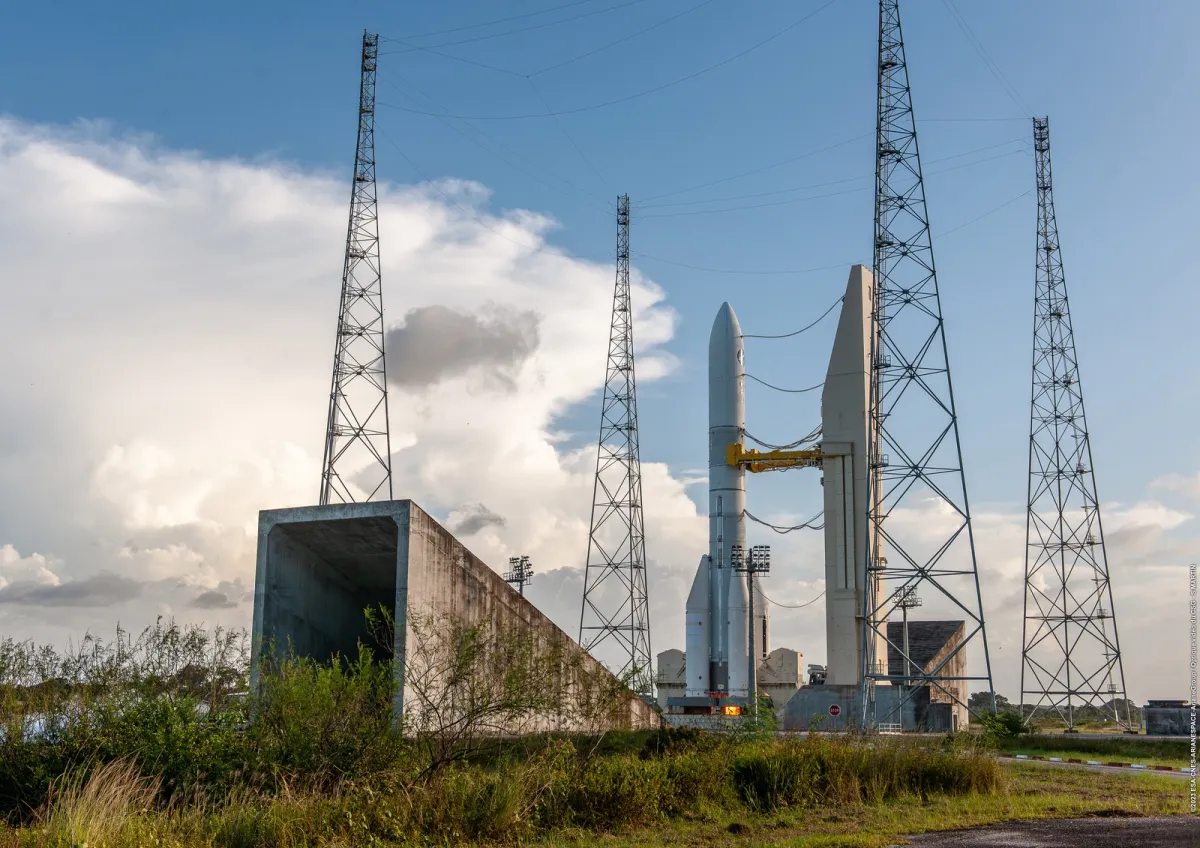ESA sets the launch date of Ariane 6
- November 30, 2023
- 0
Following the successful completion of the launch tests of the main stage, the European Space Agency announced that it expects the first launch of Ariane 6 to occur
Following the successful completion of the launch tests of the main stage, the European Space Agency announced that it expects the first launch of Ariane 6 to occur

Following the successful completion of the launch tests of the main stage, the European Space Agency announced that it expects the first launch of Ariane 6 to occur in mid-2024. In a briefing on 30 November, ESA Director General Josef Aschbacher announced the launch window for the first Ariane 6 flight from 15 June to 31 July. A more precise launch date will be announced following the qualification review in spring 2024.
This statement was made after the long test launches of the main stage model of the Ariane 6 rocket ship on November 23. This test, conducted at the launch pad in Kourou, French Guiana, was designed to simulate a complete burn-out of the launch vehicle’s main stage.
“It was clear immediately after the tests that everything was going very well,” Aschbacher said. This result was confirmed at the meeting of the Ariane-6 task force on 29 November, allowing ESA to set a launch date. “We are absolutely confident that the test was successful.”
During this test, the Vulcain 2.1 main stage engine was required to run for 470 seconds. But the engine shut down after 426 seconds, which officials attributed to a faulty sensor and “very conservative” test thresholds designed to protect the launch pad, which would not be used in an actual launch.
“All test objectives were met in any case,” said Toni Tolker-Nielsen, ESA’s director of space transport. “It didn’t change the testing success.”
The main stage tests follow tests in Germany on September 1, which confirmed the performance of the Ariane 6 booster unit in normal flight. “We have all the fire tests we need to qualify for the first flight,” said Martin Sion, managing director of ArianeGroup, Ariane 6’s general contractor.
Some additional testing is planned before the first launch. Another test of the accelerator unit is planned for December 7 in Germany to check its performance in “degraded” conditions. Ariane 6’s refueling test at Kourou is scheduled for December 15 and will result in a brief start-up of the main stage engine.
Flight equipment for the first launch of Ariane 6, called FM1, will be shipped from Europe to French Guiana and will arrive in February. According to Sion, it will undergo final tests, including a dress rehearsal.
The first launch will include several small satellites. “It won’t carry a large payload into space,” Aschbacher said, but noted that the agency wants to continue using the flight as an opportunity for smaller satellites.
If the first launch is successful, ESA and Arianespace will work on a second launch by the end of 2024. “The goal is to have a second flight before the end of the year,” said Stephan Israel, general manager of Arianespace. “This is an important goal for us.” He later said that this second launch would carry a CSO-3 reconnaissance satellite for the French military.
He said Arianespace will aim to operate “as many flights as possible” in 2025, including the first launches of its largest commercial customer, Amazon’s Project Kuiper group. The long-term goal is 9 to 10 Ariane 6 launches per year.
Aschbacher said the test, along with the agreement on Ariane 6 support reached at the European Space Summit in Seville, Spain, on Nov. 6, marked the beginning of the end of the “launch vehicle crisis” that temporarily left Europe without independent access to space. . This crisis, caused by delays to Ariane 6 as well as the grounding of Vega C after the failed launch in December 2022, requires ESA and the European Commission to turn to SpaceX to launch important science and navigation satellites.
“The Seville decision should not be taken lightly,” he said, in which ESA members agreed to provide up to 340 million euros ($370 million) per year to support Ariane 6, allowing the purchase of a tranche of 27 rockets after the first launch group. 15. The agreement also included lower levels of support for Vega C. “Guaranteed access to space for both the Ariane 6 and Vega C launch vehicles is now essential for a decade.”
“It’s really important that we regain a foothold in the launch vehicle market,” he said at the end of the briefing. “But of course we still have to perform.”
Source: Port Altele
As an experienced journalist and author, Mary has been reporting on the latest news and trends for over 5 years. With a passion for uncovering the stories behind the headlines, Mary has earned a reputation as a trusted voice in the world of journalism. Her writing style is insightful, engaging and thought-provoking, as she takes a deep dive into the most pressing issues of our time.